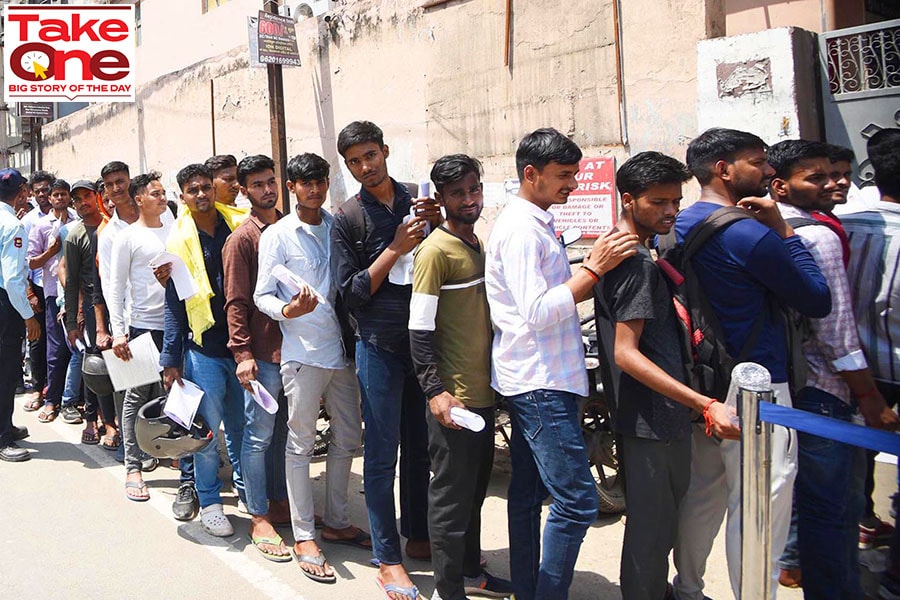Joblessness and rising food prices: Real challenges for BJP and its allies
India's private consumption expenditure is at a several-year low, hurt by rising unemployment and lower disposable income. Rising food prices only impacted households adversely. In its third term, the Modi-led government has one more chance to set things right
 Applicants standing in queue to appear in the Indian Army Agniveer Exam at an examination center, Pataliputra on April 23, 2024 in Patna, India. Unemployment rate increased in April alongside a fall in the labour participation rate (LPR), Centre for Monitoring Indian Economy data shows.
Image: Santosh Kumar/Hindustan Times via Getty Images
Applicants standing in queue to appear in the Indian Army Agniveer Exam at an examination center, Pataliputra on April 23, 2024 in Patna, India. Unemployment rate increased in April alongside a fall in the labour participation rate (LPR), Centre for Monitoring Indian Economy data shows.
Image: Santosh Kumar/Hindustan Times via Getty Images
India’s climactic general elections drew to a close after a thrilling battle on June 4. The Bharatiya Janata Party (BJP), led by Prime Minister Narendra Modi, failed to get a majority, but after swift negotiations with its coalition partners, it returned to power for a third term through its NDA (National Democratic Alliance).
Reliance on allies to form a government comes with its own set of concerns, particularly over policies involving labour, food inflation, capital expenditure and agriculture policies.
Modi will focus on a freshly reviewed 100-day agenda. But beyond this agenda mentioned in the interim budget on February 1, there are some sticky issues which the government and the central bank need to have a closer look at, economists tell Forbes India. The government needs to address how to improve income generation, boost consumption expenditure and, in turn, economic growth.
Joblessness and weak consumption
The pace at which India’s economy is growing (8.2 percent in FY24) is cloaking the fact that consumption spending has continued to slow down. India’s private final consumption expenditure (PFCE) grew at 4 percent in FY24, down 280 basis points from levels a year ago. This has been due to a combination of factors: Concerns over job security, stagnating income generation, rising inflation and a weakened/erratic monsoon last year, hitting urban and rural household incomes.PFCE was seen to be lending resilience to the domestic demand in the economy, particularly post the pandemic, but in recent years, the trend is downhill. Job security has become a real concern in urban India due to the funding winter, with a spate of layoffs, particularly in the technology sector and startup universe. In rural India, rising food prices and an erratic 2023 monsoon hurt crop output and income generation.


















